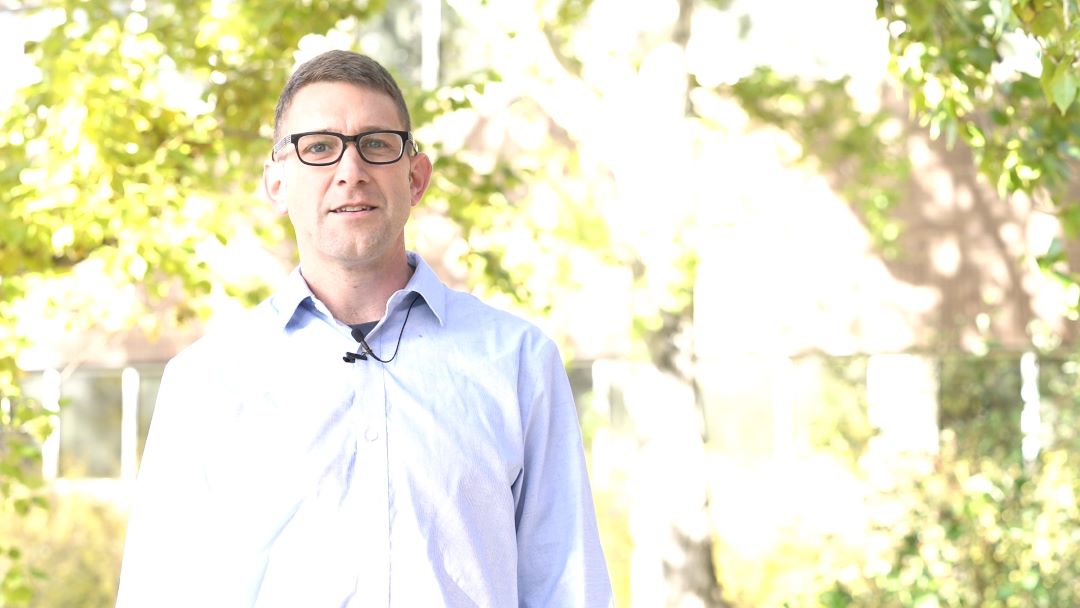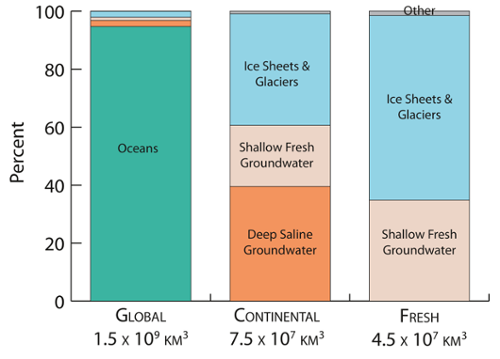
Deep water: researchers find more below than previously thought
Examination of deep groundwater reservoirs has implications for a wide array of challenges, including the search for life on Mars and understanding the origins of life on Earth.
By Kathy Fitzpatrick for the University of SaskatchewanMore water lies within the Earth’s continental crust than previously thought, according to new estimates published in the journal Geophysical Research Letters, which indicates the planet’s land mass groundwater is the largest store of water in any form, larger than ice sheets.
These are some of the main findings of lead author Dr. Grant Ferguson (PhD), University of Saskatchewan (USask) professor of civil, geological and environmental engineering, and his co-authors, an international and interdisciplinary group of scientists studying the earth’s subsurface biosphere. The newly published estimates are critical to their work.
“We know that there’s life,” Ferguson explained. “There’s been cell counts in these waters down to several kilometres. A lot of those estimates are based on how much water is available, how much pore space for these microbes to live in.”
The examination of deep groundwater reservoirs has implications for a wide array of challenges: the search for life on Mars, better understanding the origins of life on Earth — even underground nuclear waste storage, and extraction of lithium from these waters for such uses as electric batteries.
The paper builds on earlier work published in 2018 that focused in particular on water held in crystalline rock, the type that makes up the Precambrian shield and accounts for about 72 per cent of the continental crust. Ferguson added sedimentary rock to the calculation, and also looked at how porosity in rock may change at various depths thus affecting water volumes. (Rocks hold water in holes or pores, much like a sponge.)
The finding that crustal groundwater is a larger reservoir than ice sheets “has important implications in terms of how we think water has been moving around the planet for quite a long time,” Ferguson said. It’s known that some of these waters at depths of several kilometres can be millions of years old or, in some cases, more that a billion or more years old “so it rewrites how we think about how water cycles on our planet.”
Some of the oldest groundwater ever identified was discovered around Timmins, Ont., in 2013-2018 by a team led by Dr. Barbara Sherwood Lollar (PhD) and Dr. Oliver Warr (PhD) at the University of Toronto, and Dr. Chris Ballentine (PhD) of Oxford, co-authors in this paper.
“What’s fascinating about these fluids (crustal groundwater) is how much we still don’t know,” Sherwood Lollar said.
It is believed that groundwater exists down to at least 10 kilometres below the Earth’s surface, the authors write. Global groundwater volumes in the upper two kilometres, the zone where potable water is found, were previously well estimated. The paper concludes that a comparable volume, largely saline and non-potable, exists in the 2-10 kilometre zone. Although most of these deep groundwater systems are thought to be disconnected from the rest of the hydrologic cycle, they remain largely unexplored.
Sherwood Lollar wonders how much life is in the deep subsurface compared to Earth’s surface, and how and when it got there.
“Is it possible that life actually originated in these kinds of subsurface environments, and not in Darwin’s warm pond on the surface? And then finally what does all of this tell us about, for instance, the search for life elsewhere in our universe?” she said.

On Mars the search for life is linked with the search for water which, if it still exists there in liquid form, is probably buried deep in the subsurface.
Knowing the volume of Earth’s crustal groundwater, as well as the porosity of the subsurface, is also important in the production of elements that may be used in alternative energy such as hydrogen and helium, noted co-author Dr. Jennifer C. McIntosh (PhD), University Distinguished Scholar and professor of hydrology and atmospheric sciences at the University of Arizona.
Her research focus — how old the water is and where it has travelled in the subsurface — has implications in the search for safe places to store radioactive waste and carbon dioxide emissions. There must be pore space, but also the groundwater must be isolated from the rest of the environment, not actively circulating and possibly re-emerging at the surface.
McIntosh is particularly interested in the interface between actively circulating shallow groundwater and stagnant deep groundwater, which may help to reveal the bottom of the hydrologic cycle. Not only is the extent of groundwater resources a critical issue around the world she explained, “knowing the depth that you can drill to fresh and brackish groundwater is really important.” A case example is her region, southwestern USA, where recently-announced cuts in the water supply from the Colorado River mean farmers now have to rely more on groundwater.
Notably, the paper also estimates less fresh water in the ground than previous estimates suggest.

